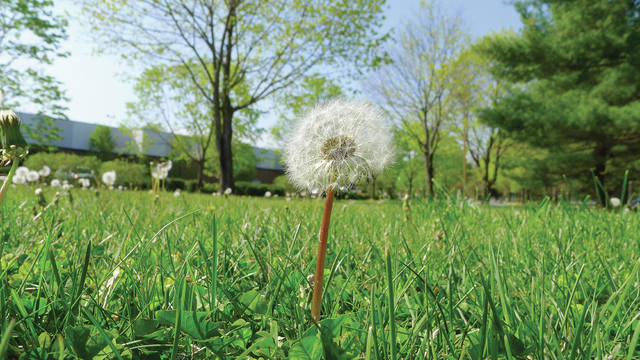As horticulture agent for NC Cooperative Extension, Richmond County Center, I get many calls about weeds, both from homeowners and farmers. This time of year especially, as winter weeds are winding down, I get many homeowners bringing in bags of weeds for identification and my help in getting rid of them. Now seems a good time to provide friendly tips to you, faithful readers, with some Words of Wisdom on Weeds. My hope is that these tips can help ease any frustration you may feel with weeds in your yard or with problem turf, and give you a plan to rectify the problem over the next year.
Tip #1: Spring is here (and gone already, apparently), which means people are getting outside and noticing the non-turfgrass that is growing in the lawn. These are the bouquets I receive from homeowners. For the most part, these weeds are cool season weeds that are now flowering and will shortly be dying, especially after the temperatures in the ‘90s we’re going to have this week and next. These weeds include henbit, a member of the mint family, with a square stem and a small purple flower; chickweed, a lush, low growing weed with small white flowers; lawn burweed, a small, low growing bushy weed, with small “burs” on the stems that make it prickly; and trampweed, a low growing weed with narrow leaves and a fluffy, dandelion-like flowerhead.
These are all broad leaf weeds, as opposed to annual bluegrass, often called Poa annua, which is an annual weed which is a grass. It is the short clumpy grass with feather duster “flowers”, which messes up the nice beige of a dormant lawn. The important thing to keep in mind with all these weeds is that they are annual weeds. The life cycle of the annual weed takes place in one growing season, where it grows from a seed, into a plant, flowers, then dies. This all takes just a matter of months.
For a cool season weed, by the time it is noticed in your yard in April, it’s at the end of its life cycle and about to die. There is no benefit to spraying it with a herbicide to hasten its demise. The optimum course of action is to mow the lawn with a bagger, which picks up the flowers and seed heads, limiting the amount of seeds that will then germinate again in the fall. If you have a lot of cool season weeds in your lawn, mark your calendar to apply a pre-emergent herbicide in the fall (August/September), to prevent those weed seeds from germinating.
If you miss the pre-emergent window, plan to apply a post-emergent herbicide in November-December, while the weeds are still small enough to effectively control. Keep in mind, weeds over 4” are almost impossible to kill with a herbicide.
Tip #2: “This mystery weed is taking over my lawn and killing my grass!”. This is something I hear quite often. In reality what is happening is the turfgrass is weak and spotty, and growing conditions are perfect for the weed that appears to be “taking over”. It may be the soil pH is too low; it may be soil conditions such as compaction or low fertility are causing the turfgrass to be weak. While a herbicide could potentially be used, if the underlying problem causing weak turfgrass is not addressed, weeds will continue to be a problem. Follow the mantra of the Extension Agent: “test your soil”! This free service of the NC Department of Agriculture and Consumer Services will give you valuable information about your soil and give a recommendation on what action needs to be taken to grow your specific turfgrass (or any other crop, for that matter).
Tip #3: Weed and Feed and centipedegrass don’t mix. I’ve harped on this issue before, but as I keep meeting people who are still using it on their centipedegrass, it bears mentioning again. The problem with Weed and Feed is two-fold: #1, most weed and feed herbicides have 2,4-D or some other herbicide which is problematic for centipedegrass, which is very sensitive to broadleaf herbicides (unlike bermudagrass or zoysiagrass). A low rate must be used or yellowing (damage) or even death can occur (of the grass, not the applicator). The second problem is the “feed” – fertilizer application.
Because Weed and Feed is used as a pre-emergent herbicide, it must be used very early in the season – usually sometime in March. This is much too early to fertilize centipedegrass, which should be fertilized in late May/early June. Additionally, centipedegrass requires only a half pound of nitrogen per 1000 square feet; with Weed and Feed, not only is nitrogen going on at the wrong time of year, there is too much of it being used.
Take home message: mark your calendars for fall pre-emergent or for a post-emergent spray in November-December if you have problem cool season weeds. Soil test if your turfgrass is weak.
Bonus tip: it’s almost time to spray for sandspurs. Don’t wait until late summer. It will be too late! It is a warm season annual weed, so it should be managed early in its life cycle.
For more information and help with your lawn, be sure to call the NC Cooperative Extension office in Rockingham, at 910.997.8255.

